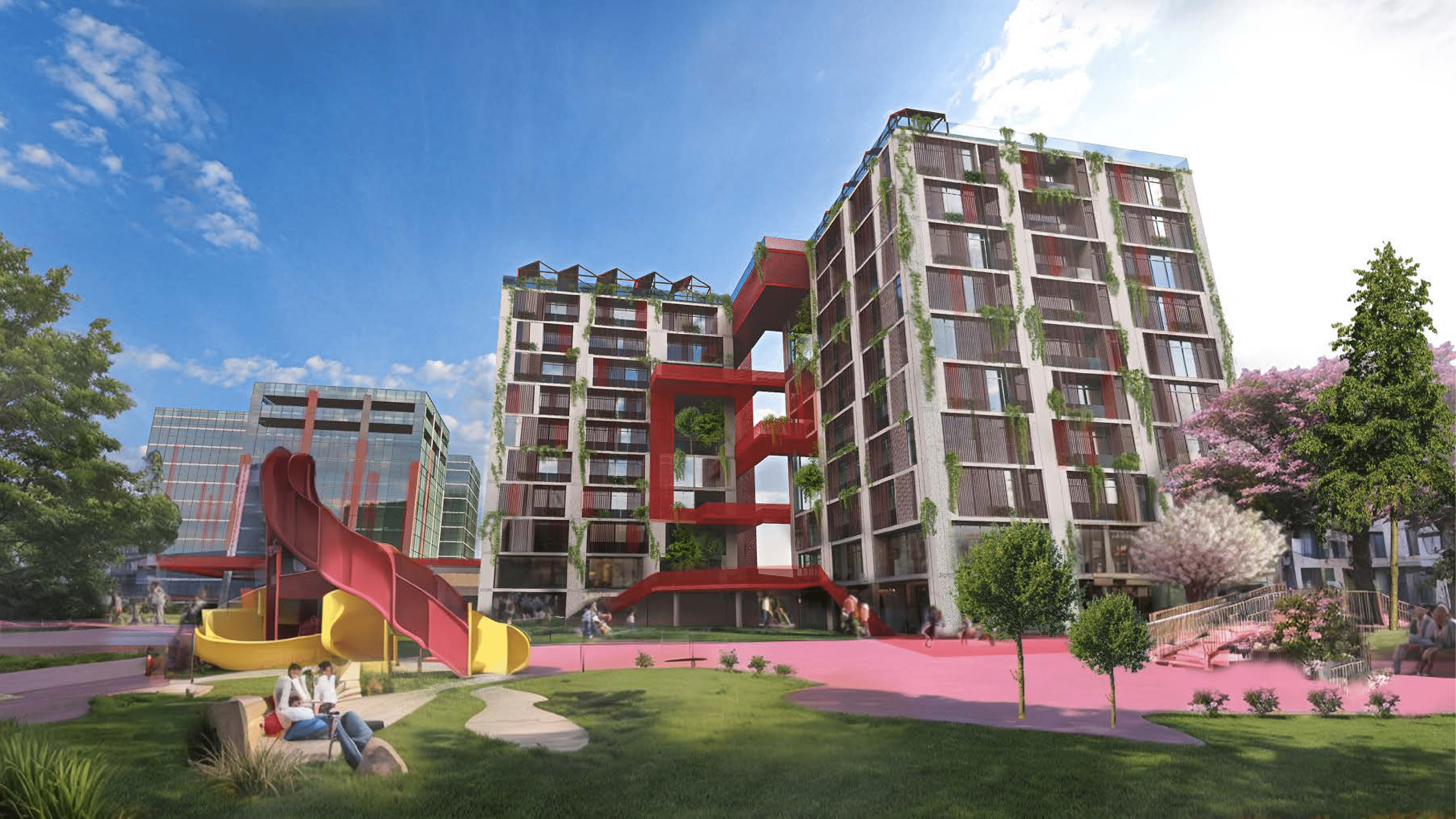ARTICLES


The Workshop of the Master in Offsite Technologies for Architecture (OTA) has once again proven to be a key event in exploring the evolution of urban suburbs through offsite technologies. This year’s challenge focused on the regeneration of the business park towers in Via Tucidide, located in the Ortica district of Milan, a project developed in collaboration with Urban Up | Unipol Group.
Under the expert guidance of Nicola Scaranaro of Foster + Partners, participants tackled one of the most pressing issues in contemporary urban development: how to transform existing buildings into sustainable, integrated, and innovative residential and social spaces.
Here are the projects that took shape during the workshop, each offering a unique vision for the redevelopment of Ortica.
Nora Seferi | Alicja Grzegorczyk | Lilibeth Martinez | Ahlem Balghouthi
This team focused on enhancing the historical and artistic identity of Ortica, a neighborhood deeply connected to its industrial past yet increasingly recognized for its cultural vitality. Their project addressed the concept of urban memory, transforming the towers into a multifunctional hub combining residences, coworking spaces, and cultural and community areas.


The primary goal was to prevent gentrification, offering an inclusive development model that retains existing residents while attracting new creative communities.

The Manifesto of the ProjectWe habilitate and enable the building as a passage, opening up spaces unvails what is hidden behind the wall, cultivating awareness and sparking curiosity. |
Abdu Farahat | Beatriz Magrin | Bruna Bonavita | Gabriele Bianchi | Maria Pia Iesu
This team adopted a layered regeneration approach, blending the memory of the site with a new vision for the future. Their project focused on transforming the towers and the former Cubotti Ligresti canteen into a mixed-use system encompassing residential, cultural, and commercial functions, all while ensuring energy efficiency and sustainability.


This project demonstrated how offsite technologies can be used not only for new construction but also to upgrade and enhance existing buildings, ensuring minimal environmental impact while improving urban quality of life.
The Manifesto of the ProjectEnhance the artistic atmosphere to highlight the community's authentic culture, improving the sense of belonging. |
Anthony Atoui | Darya Zhukouskaya | Angelica Vargas | Deniz Kaya | Sara Aramburu
This team leveraged Ortica’s strong cultural identity to propose a project that blends art and architecture, transforming the area into a creative and residential hub. The goal was to extend the Ortica Memoria project to the Via Tucidide towers, turning them into artistic landmarks that engage with the city.


This project aims to transform Via Tucidide into a new urban center for art and creativity, merging residential and cultural functions into a cohesive and inspiring urban experience.
The Manifesto of the ProjectOur project creates a bold connection between Ortica's vibrant artistic identity and the broader urban landscape of Milan, bringing an explosion of colour that extends Ortica's murals - its creativity and energy - to our building and beyond. By extending these colours vertically and horizontally, we aim to transform the building into a beacon of artistic expression that celebrates both Ortica's past and its dynamic present. |
Aleksandra Stefanovic | Isabel Nicole Limpo | Saliha Rafiq | Esma Onur
This team focused on flexibility and scalability in housing solutions, proposing a modular system of prefabricated extensions that could adapt to changing needs over time.


This project envisions a flexible urban regeneration model, capable of evolving over time without the need for demolitions or invasive interventions.
The Manifesto of the ProjectOur project aims to enhance connectivity within the neighborhood by introducing an electric bus line to Milan’s city center and new pedestrian and cycling paths to facilitate internal mobility. We seek to promote culture and community, creating inclusive public spaces that connect long-time residents with new inhabitants, ensuring flexibility and adaptability to social changes. Finally, our vision focuses on sustainability: the use of offsite technologies reduces construction time, costs, and environmental impact, while low-emission materials and adaptive buildings ensure a resilient future for Ortica. |
Fiona Hajerdini | Hind Abdelaitif | Sogol Nopoosh
The fifth team developed a comprehensive urban regeneration masterplan, integrating the Via Tucidide towers into a broader system that includes residences, services, and public spaces, carefully analyzing the neighborhood’s historical evolution and target demographics.


This project sets a benchmark for metropolitan periphery regeneration, demonstrating how urban strategies and offsite technologies can revitalize underutilized spaces into thriving, contemporary urban districts.
The Manifesto of the ProjectOur vision is to transform Milan's suburbs into a vibrant, sustainable, and inclusive urban hub. The Tucidide Towers will become a benchmark for regeneration, merging industrial heritage with innovative design to address Milan's housing challenges while fostering community. Our approach celebrates community and culture, embedding opportunities while embracing Ortica's artistic identity. The towers' façades and forms will become iconic statements, balancing functionality and aesthetic innovation. |
The OTA Workshop 2024 has once again proven how the synergy between academia, design, and industry can generate innovative ideas and tangible solutions for urban transformation. Thanks to Unipol’s collaboration and the expertise of Nicola Scaranaro, participants had the opportunity to engage with real-world challenges and develop scalable projects that could be implemented on an urban scale.
Offsite technologies continue to emerge as key tools for the future of urban architecture, proving that innovation and sustainability can go hand in hand in shaping the cities of tomorrow.

Ambra, Performance Marketing Manager at Manni Group, develops digital marketing strategies with a focus on innovation in offsite construction and architectural design. With over 8 years of experience in digital marketing, she has coordinated the international launch of sustainable construction systems and the digitisation of the industry. Specialised in lead generation and data analysis, she leads initiatives such as the Master in Offsite Technologies for Architecture and the international Manni Group Design Award Contest, enhancing the dialogue between manufacturers and designers to promote cutting-edge solutions.
Visit the author's pageLeave your data to keep updated in Manni Group products, services and activities